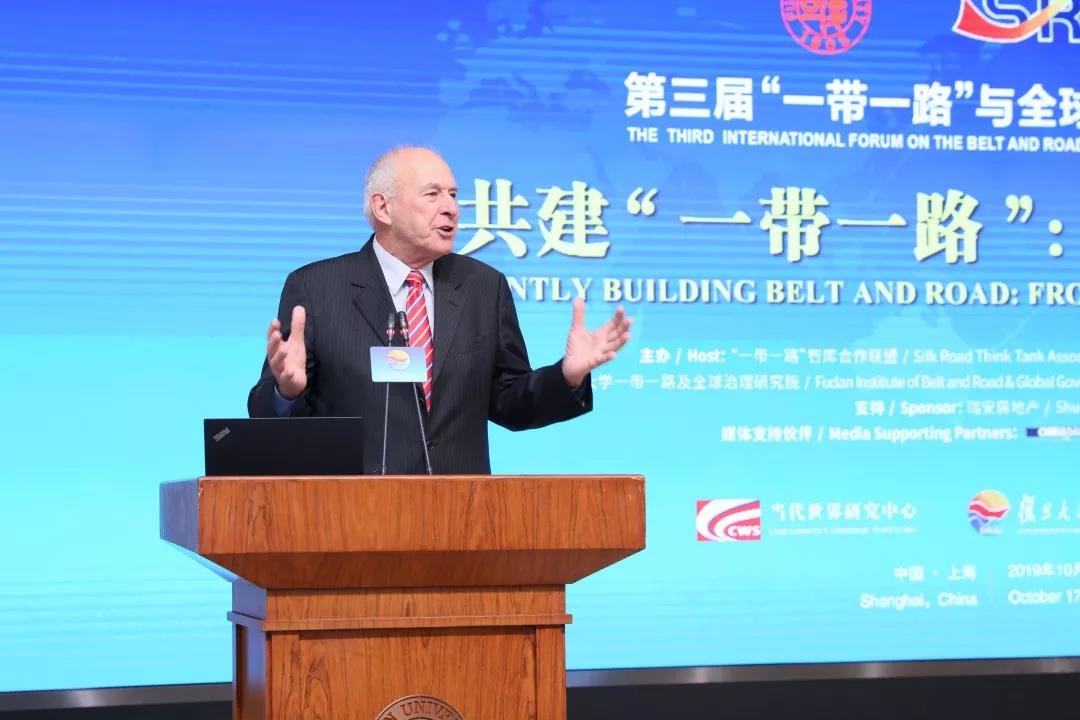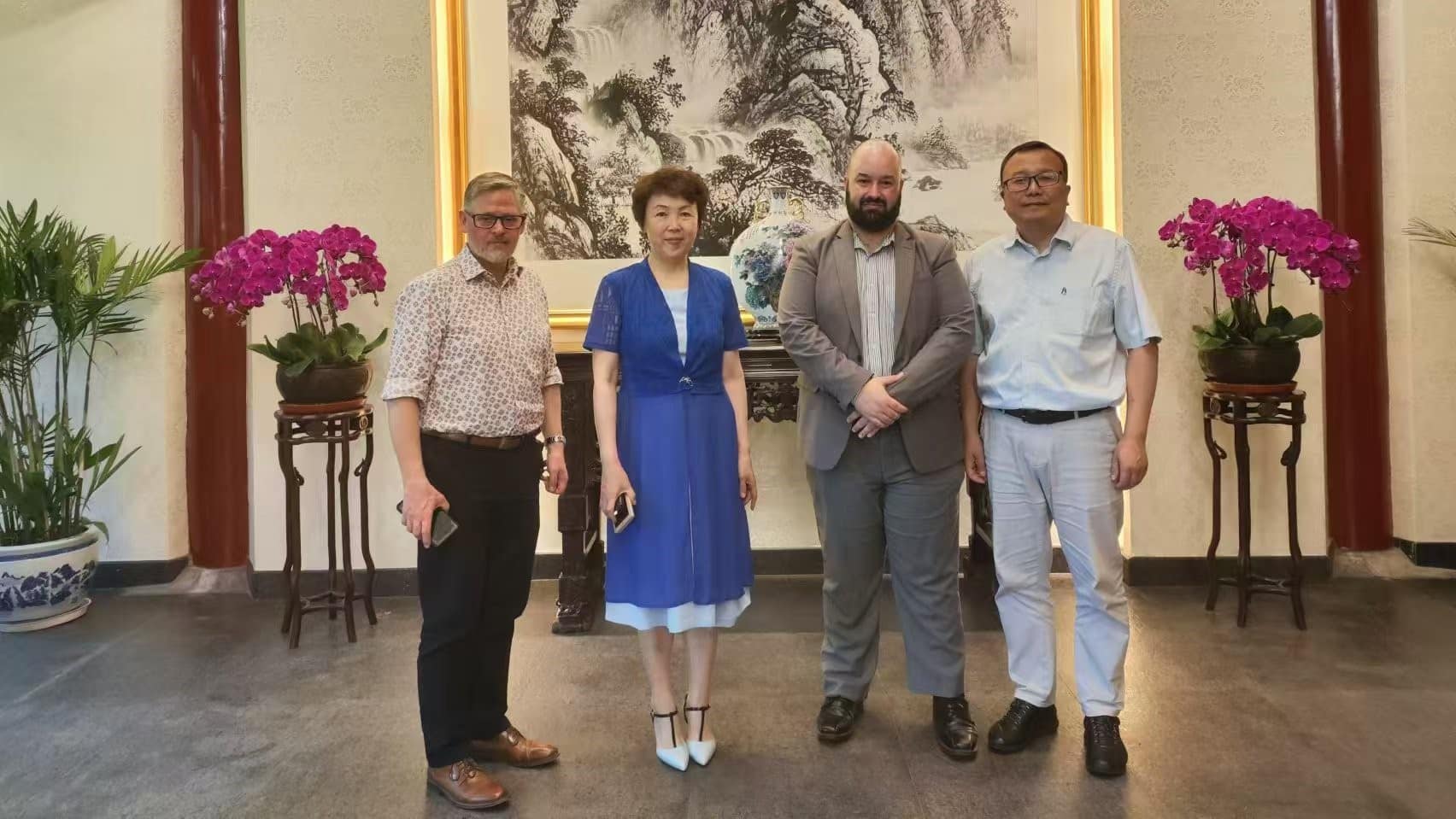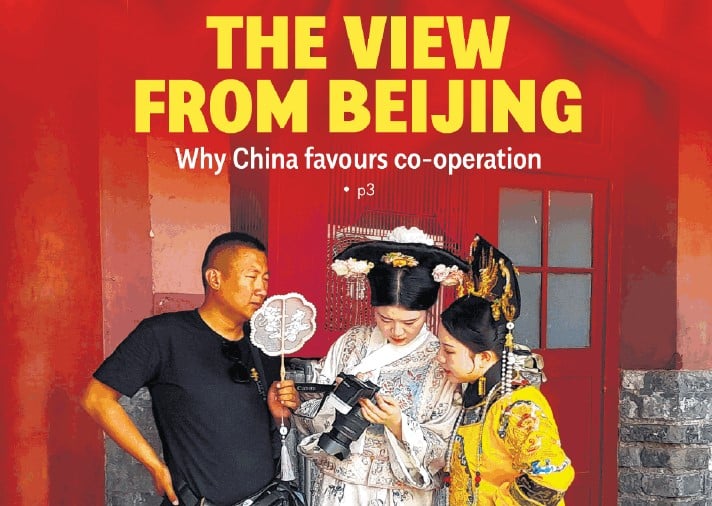THE SCOPE OF NZ/CHINA BRI CO-OPERATION
ADDRESS TO THE THIRD INTERNATIONAL FORUM ON
BELT AND ROAD & GLOBAL GOVERNANCE
SHANGHAI, 18 OCTOBER 2019
SIR DON MCKINNON
CHAIRMAN
NEW ZEALAND CHINA COUNCIL
Tēnā koutou, tēnā koutou, tēnā koutou katoa – greetings to you in the language of the Māori people of Aotearoa/New Zealand.
Da Jia Hao! Hen Gao Xing Lai Dao Shanghai!
It’s a pleasure to be here and to speak with you about New Zealand’s role in the Belt and Road Initiative.
I am conscious that we are meeting in the 70th year of the founding of the People’s Republic of China.
On behalf of the NZ China Council I am pleased to extend our warmest congratulations to your Government and people.
Important anniversaries like this are an opportunity to take stock of what has been achieved, but also to look towards the future.
It is clear to me that China has always advanced when it has opened up to the rest of the world and when reform has been built on the spirit of openness.
Today I am pleased to talk to you about how the Belt and Road Initiative can be a further means of developing openness and growth at the global level and as a new foundation for the relationship between China and New Zealand.
I’d like to look first at the relationship between our two countries, our role in BRI and then how a new initiative – the Southern Link – can build a new conduit for trade, travel and tourism between China, New Zealand and the countries of South America.
The NZ China relationship
Firstly we take the New Zealand – China relationship very seriously . It informs our every action.
Earlier this year the New Zealand Prime Minister, Rt Hon Jacinda Ardern, her first official visit to Beijing.
The Prime Minister was warmly welcomed and her visit provided an opportunity for both sides to reaffirm the Comprehensive Strategic Partnership which has guided the relationship in recent years.
Those of you here today who know us well, will be aware that China and New Zealand have pioneered a series of historic “firsts”, including a ground-breaking free trade agreement signed 11 years ago, which have given rise to a mutually beneficial relationship for both countries especially in the trade and economic sphere.
China is now New Zealand’s largest trading partner.
We do not rank quite as highly here in your country but our reputation as a reliable of safe, sustainable and nutritious food products and other high quality goods and services is widely known in China.
Chinese investors have found in New Zealand profitable business opportunities which are contributing to economic growth and development in our country, especially in the regions.
Beyond these trade and economic flows, the significant flow of Chinese tourists and students to New Zealand is building mutual understanding day by day.
This understanding is vital, given that our two countries are different in many ways -certainly in size and scale but also historically, culturally and politically.
When you have different history, culture and politics, you have to work extra hard, in fact both of us have to work extra hard.
Today New Zealand and China are co-operating on a wider range of global issues than ever before, such as working side by side to uphold the rules of international trade and strengthen the World Trade Organisation as well as finding solutions to the urgent and vital problem of climate change.
Even so, China and New Zealand will never agree on everything all the time.
We share different perspectives on some key issues including human rights and regional security.
At times of global tension such as we are experiencing today a relationship as increasingly broad and complex as the one between China and New Zealand will face challenges of management.
There will even be occasional disappointments – some big, some not so big.
As our Prime Minister has said that should not prevent us from working together where it makes sense to do so.
That is also when we need to redouble our efforts to engage with each other, to explain and discuss any differences and to look for those areas where we can move forward.
We must never stop talking to each other.
This is the context in which the NZ China Council works to build a strong and resilient relationship between our two countries.
I was the New Zealand Foreign Minister from 1990 to1999, and visited China many times. I was then the Commonwealth Secretary General for eight years and knew at first hand the hard work needed and benefits of good relationships.
In 2012, the then New Zealand Prime Minister Sir John Key asked me to set up the Council to ensure our activities are aimed at stimulating discussion and dialogue, providing information and advocacy and bringing together key people in the relationship on both sides.
Our scope is not just confined to trade and the economy: while we are keenly interested to see a successful outcome to the upgrade of our Free Trade Agreement, we also focus on language and culture and on public perceptions of the relationship.
The Council is fortunate to be supported by the New Zealand Government and is comprised of leading individuals and organisations in the relationship.
We welcome also our co-operation with New Zealand agencies overseas including Ambassador Fearnley in Beijing and Consul-General Robinson here in Shanghai and with Chinese Ambassador Wu Xi and her colleagues in New Zealand.
Ours is unashamedly a New Zealand view of the relationship: we are New Zealand-funded and New Zealand-led, but we rely on the partnership we have built with our Chinese friends and allies, including Chinese migrants to New Zealand who make a significant contribution to our country.
New Zealand and the Belt and Road Initiative
In May last year, the NZ China Council launched a significant report – “The Belt and Road Initiative: A Strategic Pathway”.
Our report aimed to show how a distant nation like New Zealand can co-operate with BRI and how it can add value to New Zealand’s relationship with China and other countries along the Belt and Road.
In March 2017, the two governments signed a Memorandum of Arrangement (MoA) under which the two countries undertook to explore ways of working together in relation to BRI.
We look forward in due course to the announcement of a future work programme between the two countries, but we haven’t waited for this to start the process of reflection in New Zealand.
The Council believes that BRI can help us develop the momentum of the relationship into the future.
It is in the area of connectivity that the Council believes BRI could provide a significant opportunity for New Zealand.
Our report identifies a number of opportunities that can be further developed in a BRI framework.
These include:
- trade facilitation (incorporating biosecurity, customs clearance and supply chain hubbing)
- New Zealand as a conduit to Latin America
- innovation; and
- the creative sector
Rather than build the Belt and Road through physical infrastructure, we can help goods, services, capital and people move more easily along the Belt and Road.
Trade facilitation projects could leverage New Zealand’s world class biosecurity regime, expertise in cross border movement of goods, and experience in working across jurisdictions in supply chain hubs.
New Zealand’s geographic location and existing trade and tourism relationships with China and South America position us well as a natural connection between the two.
In the innovation space, New Zealand can utilise its strong capability in science and technology and advance our existing collaboration and promote greater commercialisation of ideas.
For the creative sector, opportunities exist to use our creative strengths in web solutions, gaming and other properties to expand people to people links, cultural awareness, understanding and exchange.
These are just a few ideas that we believe could be developed further by the public and private sectors to boost our co-operation under BRI and contribute to its goals of development-led growth.
It’s clear that BRI is itself continuing to mature and develop.
At this year’s Belt and Road Forum in Beijing it was of particular interest for New Zealand and other countries to hear how steps are being taken to improve governance, accountability and transparency around BRI projects.
This is very welcome, not simply to address some persistent criticisms of BRI but also to improve delivery and outcomes.
The New Zealand Government has said it is prepared to work with the Chinese Government and other partners to address these issues.
New Zealand does so as a strong supporter of the rules-based international order and as a strong participant in other initiatives aimed at facilitating openness and development, like the Comprehensive and Progressive Agreement on Trans Pacific Partnership (CPTPP) and the Regional Comprehensive Economic Partnership (RCEP).
We should see BRI and these other initiatives as two sides of the same coin – ways of promoting economic integration and better prospects for our citizens.
Building the Southern Link
BRI provides an opportunity for looking at the world differently.
Or perhaps not so differently – after all the BRI seeks to build on the Silk Road, the ancient trade routes between China and Eurasia.
Another not-so-new idea which we believe BRI can help bring into reality is the Southern Link.
We have an opportunity before us to make New Zealand a major and natural connection or conduit for trade, travel and tourism between China and Southern South America.
It’s a simple fact: to travel from Asia to South America across New Zealand is the shortest and quickest air route between the two great continents.
This is a concept directly related to the Maritime Silk Road.
The Southern Link was a key theme at a conference, which brought together 150 business people, government officials and thought leaders from New Zealand, China, Argentina and Chile in Auckland on 25 June.
We were most grateful that Fudan University partnered with us to put together this event, alongside other partners from Argentina and Chile.
The Southern Link would involve routing passengers and multi-modal freight between China and South America via New Zealand, providing and facilitating a more seamless and convenient flow of goods and people compared to alternative hubs in the Northern Hemisphere.
The scale of this opportunity was highlighted by speakers from Fudan.
Professor Huang Renwei pointed out that China is now South America’s second largest trade partner, and that New Zealand is the ideal aviation link and mid-way meeting point between the two continents.
Chen Zhimin, Vice President of Fudan University continued the theme, noting that countries of South America are becoming an important engine of globalisation.
Chinese Ambassador, Madam Wu Xi, noted the project would fit well with the goals of multilateralism, connectivity and inclusiveness of the Belt and Road.
Attendees agreed that creating a regional hub through Auckland or Christchurch would strengthen the viability of network routes for airlines, and greater flows of passengers and goods would help New Zealand grow its global and regional linkages as well as contribute to greater trade and people-to-people exchanges across the Pacific.
Visions are great, but turning them into reality requires hard work: we know that to achieve the Southern Link a number of changes will need to be made to both commercial strategy and public policy including transit visas, air service agreements and trade facilitation mechanisms.
A working group led by the NZ China Council has been established to pick up the ideas from the conference and to develop concrete action plans needed to begin the process of turning the Southern Link from vision into reality.
What is clear is that the vision cannot be achieved by one country working alone.
We need to work to build support on both sides of the Pacific, to encourage governments to make the necessary changes to public policy and to motivate commercial players to make the necessary investment.
The Southern Link is a way of making tangible progress together in the BRI framework and we look forward to continuing to work closely with Fudan and other partners with us today.
Conclusion
Looking at the world today it is easy to become disheartened by the slow and uncertain process of multilateral co-operation.
By being willing to work closely together, despite our differences and whether or not we might agree on all issues, China and New Zealand can demonstrate to the rest of the world that there is value to be created through openness and co-operation.
The BRI provides a new framework for future co-operation which will be enhanced through deeper understanding and improved governance.
The Southern Link is an idea whose time has come, but it is one where it is up to us to develop the partnership that can take it from vision to reality.
I look forward to continuing this discussion with you, to the outcome of this important conference and to the further development of the relationship between China and New Zealand in the years to come.












 MENU
MENU
